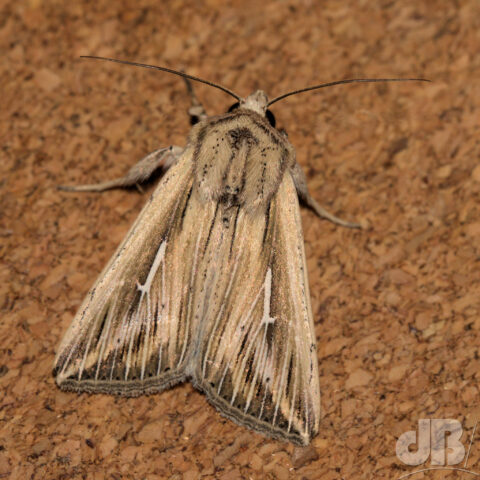TL:DR – We finally caught up with White-tailed Eagles on a trip to Dorset in September 2022 after seeking them out in various places over the last couple of years.
We took another trip south in September. Stayed some way inland in the historic town of Corfe Castle but couldn’t keep away from the coast and visited RSPB Arne, RSPB Lodmoor, RSPB Radipole Pond, NT Studland, and took a boat trip in Poole Harbour up the Wareham Channel, and a train journey from Corfe to Swanage where we were plagued by Geography Fieldtrips measuring the groynes on the beach.
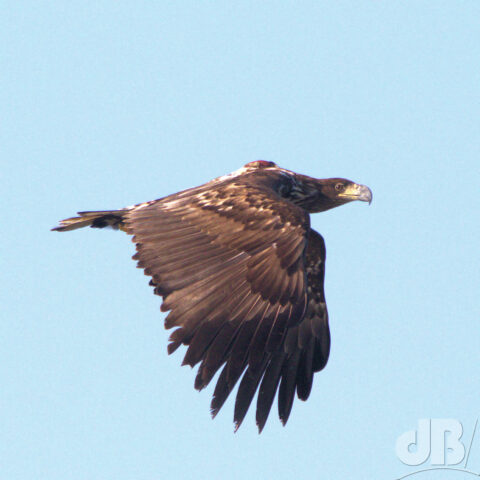
RSPB Arne is the English homeland of the Dartford Warbler and plenty of other wildlife, although we saw very little of it on our visit for some reason, apart from some “wild” pigs and distant waders. We also missed, by just a few minutes, a White-tailed Eagle fly-by and also failed to see an Osprey way over the moor towards Corfe itself. We didn’t see any Dartfords there either, that would wait until we got to the moors behind Knoll Beach at Studland.
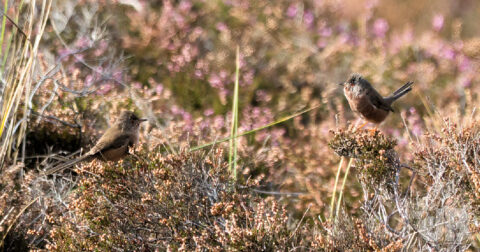
While at Arne, missing the Osprey and WTE, we spoke to various people one of whom recommended a visit to Lodmoor and Radipole Pond (spotted a Clouded Yellow butterfly there) and those sites were generally much busier in terms of birdlife, Great White Egret, Grey Heron, Oystercatcher (dozens), Avocet (hundreds), Curlew, Black-tailed Godwit, Great Crested Grebe etc.
We were lucky enough to see dozens and dozens of House Martins and Swallows when we climbed East Hill in Corfe. Seemingly, Monday the 19th September was a good day for seeing hundreds of departing migrants. Also towards the top of the hill, a couple of Clouded Yellow butterfly.
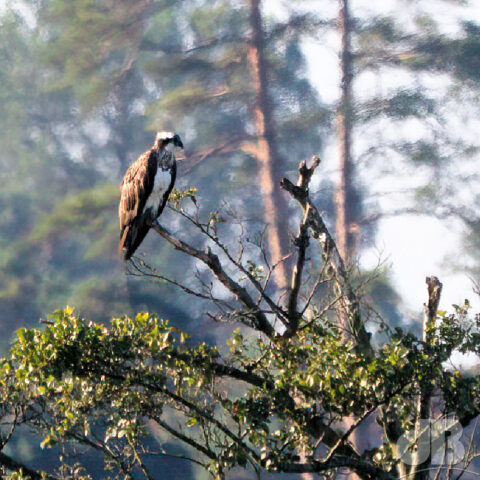
The 2.5 hour boat-trip with the charity Birds of Poole Harbour was much more of a success than the trip to Arne. We had sightings of Shag and Sandwich Tern within minutes of setting sail and a large flock of Phalacrocorax carbo sinensis, the Chinese Cormorant sub-species, which is much more gregarious than its relative the Common Cormorant.
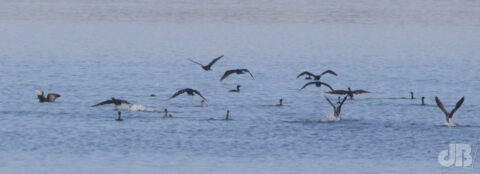
One of our incredibly well-informed guides (Paul) spotted an Osprey perched in a dead tree on the non-public edge of RSPB Arne, then the other equally well-informed guide (Liv) spotted a White-tailed Eagle (turned out to be the juvenile female with the radiotag ID G801). She was perched high in a pine tree a little further up the channel. It was hard to get clear photos through the heat haze and at a distance of several hundred metres, but worth a try. When the eagle took to the air, I got a reasonable shot at it before a second (a juvenile male) was sighted.
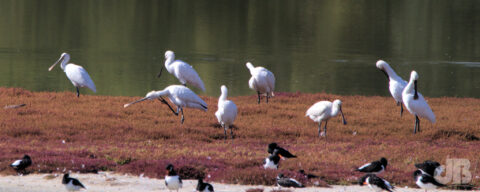
These eagles and the ospreys are both part of reintroduction programmes on the south coast to bring back raptors to this area that were persecuted to local extinction. Unfortunately, there are rich landowners with a vested interested in breeding and killing millions of game birds (pheasants, grouse etc) for a very lucrative sport. They claim the birds of prey are a threat to their industry. The birds are no threat to this vast industry given the huge numbers of game birds involved. The raptors may eat dead game birds, but the industry dumps most of the birds that are shot for sport. Farmers often protest that eagles could take valuable lambs and counter the awarding of reintroduction licenses, they know full well that this is an incredibly rare happening and it’s just an excuse to protect their game birding, which makes them thousands of pounds per person. Eagles will find plenty of carrion and smaller wild birds to eat without needing to tackle lambs.
Interestingly, the eagles, which we used to think needed high mountain and moor, seem quite happy to live in this coastal zone. So, ultimately, translocation schemes will hopefully be successful. We’re still hoping that the Wild Ken Hill licence will be allowed in North Norfolk.
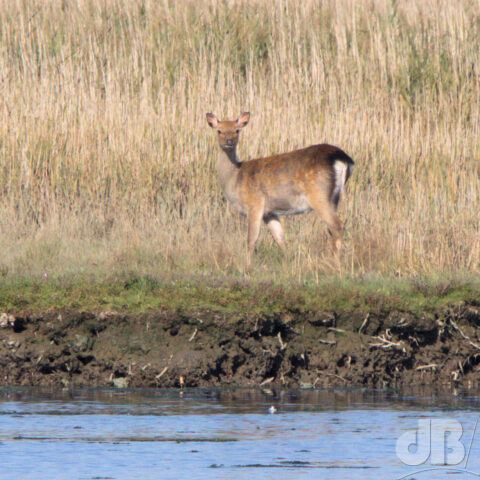
Meanwhile, back on the boat, we continued to add many more species of bird to the boat trip list (which ultimately amounted to 48 bird species) before heading back to the harbour and the lagoon on Brownsea Island where 60+ Spoonbills were feeding.
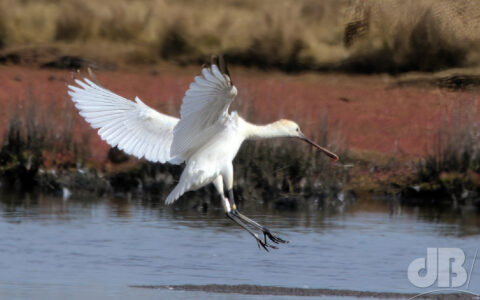
The Spoonbill is another growing success in England where once the bird was eaten to extinction in the 17th Century. There is a breeding colony in North Norfolk, but dozens are now seen in Dorset and Somerset. The flock we saw on Brownsea is mostly comprised of visitors from The Netherlands. Also had a flyover of Dunlin and sighting of at least one Curlew Sandpiper, Redshank, Greenshank and more. We have seen Spoonbill at various times over the years, but usually only one or two together and perhaps three; there were two at Lodmoor even.
We “twitched” the juvenile Red-backed Shrike and first-winter Citrine Wagtail mentioned in BirdGuides that and previous days. The Citrine made an appearance close to where birders told us it would be. There was some initial doubt that it might have been an Eastern Wagtail, but an expert who heard it call, pinned it down to Citrine.
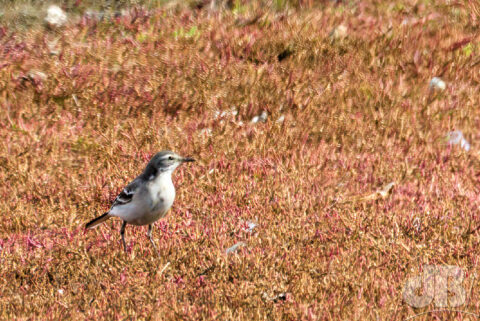
The juvenile Red-backed Shrike took a lot more hunting down as it was on what local birders know as the old dump, not the Lodmoor reserve itself. BirdGuides was pretty close with its grid reference from earlier in the day. There are usually only a couple of breeding pairs of RBS in the UK each year, and it is essentially extinct here. However, a couple of hundred migrants do skirt the east and south coast of the UK on passage. They’re often known as butcher birds because they hang their prey on thorns or even barbed wire to eat later.
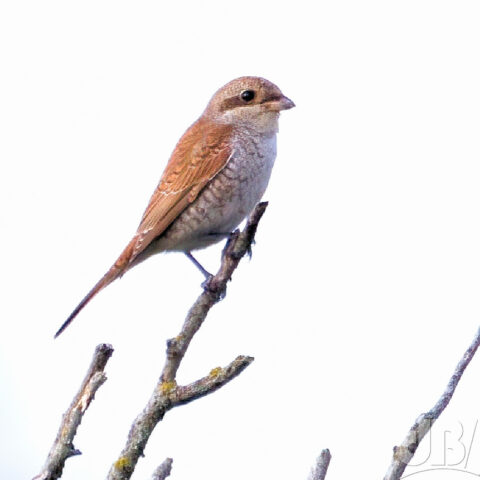
By the end of the holiday, we’d almost forgotten about trying to spot Dartford Warbler (we had seen them at Dunwich Heath on a Suffolk trip earlier in the year). However, after visiting Old Harry Rocks, we headed through Studland and up on to the heather and gorse encrusted dunes behind Knoll Beach and saw perhaps half a dozen, as well as numerous Wheatear and Stonechat.
For those who like lists, these are the 74 or so bird species we saw* and noted during our September 2022 week of birding and sightseeing in Dorset:
Avocet, Bearded Reedling, Black-headed Gull, Black-tailed Godwit, Blue Tit, Canada Goose, Carrion Crow, Cattle Egret, Cetti’s Warbler, Chiffchaff, Citrine Wagtail, Collared Dove, Common Buzzard, Common Sandpiper, Coot, Cormorant, Curlew, Curlew Sandpiper, Dartford Warbler (Studland), Dunlin, Egyptian Goose, Feral Pigeon, Gadwall, Goldfinch, Great Black-backed Gull, Great Crested Grebe, Great Tit, Great White Egret, Greenshank, Grey Heron, Grey Wagtail, Herring Gull, House Sparrow, Jackdaw, Kestrel, Kingfisher, Lapwing, Linnet, Little Egret, Little Grebe, Magpie, Mallard, Marsh Harrier, Meadow Pipit, Moor Hen, Mute Swan, Osprey, Oystercatcher, Pied Wagtail, Redshank, Red-backed Shrike (Lodmoor), Redwing, Ringed Plover, Robin, Rook, Ruff, Sandwich Tern, Shag, Sinensis Cormorant, Snipe, Sparrowhawk, Spoonbill, Starling, Stonechat (Studland), Tufted Duck, Turnstone, Yellow Wagtail, Water Rail (*heard), Wheatear (Studland), White-tailed Eagle, Widgeon, Willow Warbler, Wood Pigeon, Wren.
There were probably a few other species we saw but didn’t note bringing the total for the week to at least 60. Oh, we also saw quite a few Sika Deer and I did a bit of mothing in Corfe with the LepiLED and added L-album Wainscot and Ruddy Streak (Tachystola acroxantha) to my moth life list.
